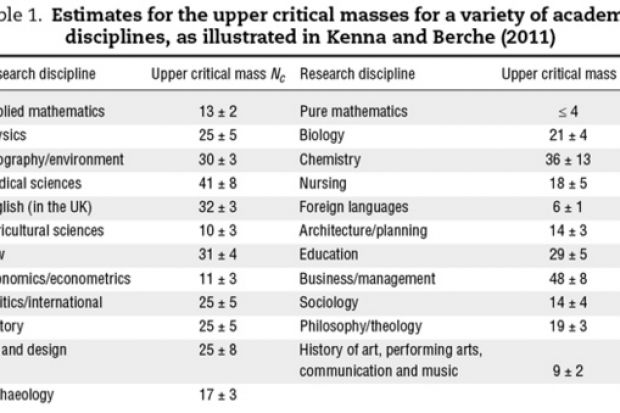This is the implication of an academic paper that identifies the ideal upper size limit for research groups.
The paper, "Critical masses for academic research groups and consequences for higher education research policy and management", published in Higher Education Management and Policy, postulates that the quality of research groups increases proportionally to their size.
However, quality ceases to rise significantly beyond what the authors - Ralph Kenna, deputy director of Coventry University's Applied Mathematics Research Centre, and Bertrand Berche, head of Université Nancy's department of physics - call "upper critical mass".
They suggest that this is because there is a limit to the number of colleagues with whom individual researchers can meaningfully communicate. "In a department of 80, it is hardly likely that you could meaningfully interact with 79 other people," Dr Kenna told Times Higher Education.
But the upper critical mass varies widely across disciplines, from 48 in business and management to just six in foreign languages and four in pure mathematics. Dr Kenna declined to speculate on the reasons for this difference in disciplines with which he was not familiar.
But he dismissed the idea that pure mathematicians were unable to communicate with more than four people. He suggested that the difference between maths and physics - where the upper critical mass is 25 - was that physics often required a lot of people to work together on experiments.
The authors believe their work also lends weight to earlier studies suggesting that there is little difference between the citation performance of research carried out at Russell Group and 1994 Group universities, despite the latter being smaller.
Their examination of research assessment exercise results - based on peer review - also found little difference in performance.
"The difference is that we can explain why: universities in both the Russell and 1994 groups tend to have group sizes larger than the upper critical mass," Dr Kenna said.
The implication of the theory, he added, was that the best way to improve the UK's research performance was to increase the size of groups currently below the upper critical mass.
